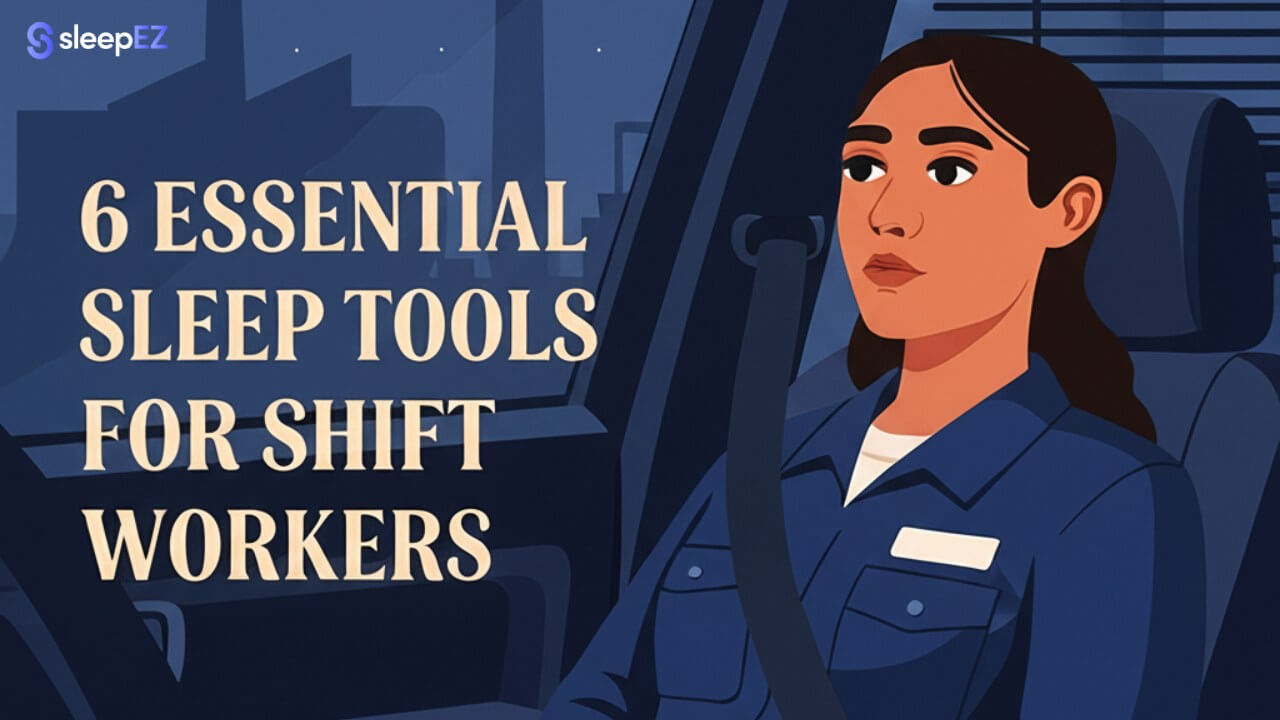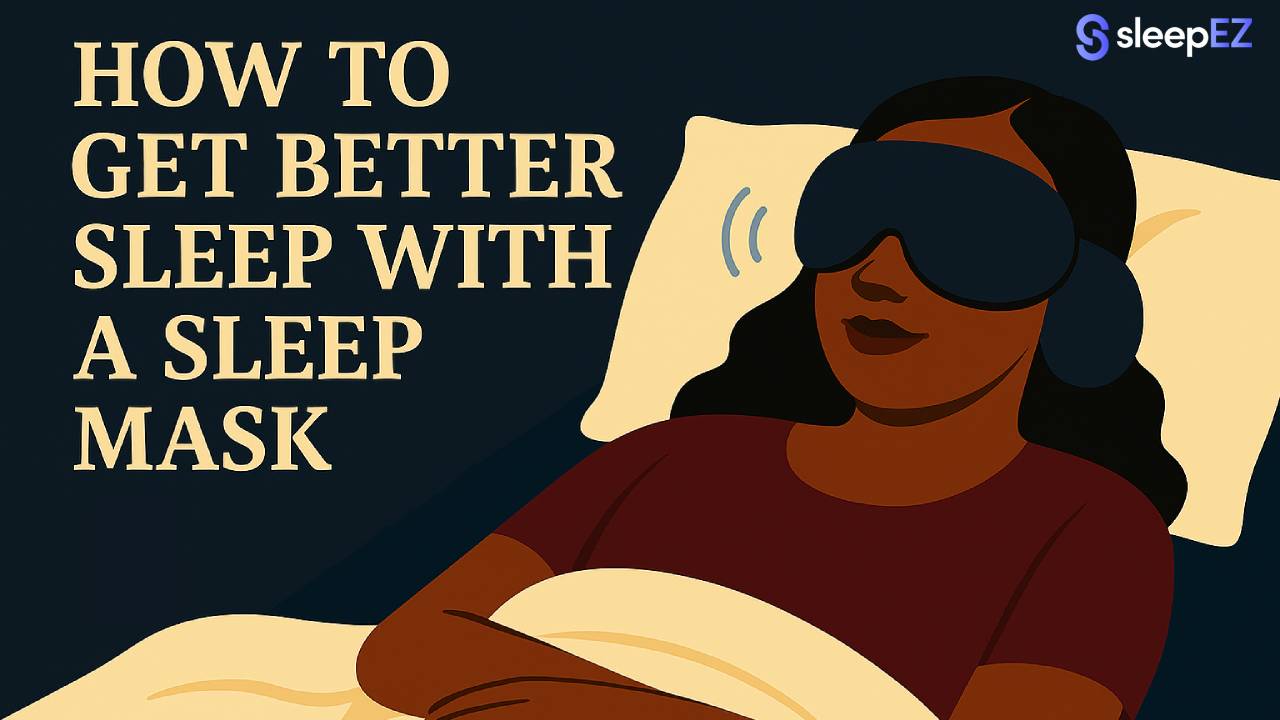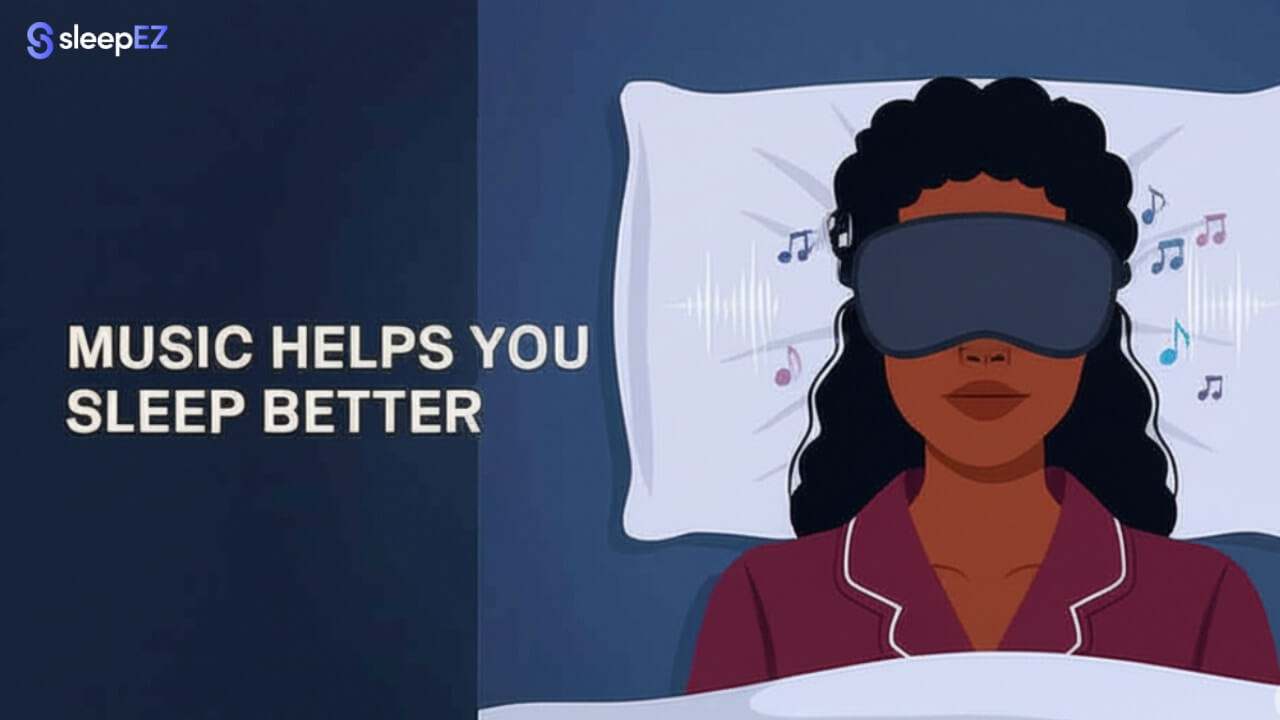Working shifts makes it hard to get good sleep. When you work at night or switch between day and night shifts, your body's internal sleep clock gets disrupted.
This isn't just an inconvenience; it can significantly impact your health, safety, and overall well-being.
According to the Sleep Foundation, approximately 25-30% of shift workers experience serious sleep problems that negatively impact their health.
If you work odd hours in healthcare, emergency services, or factories, you understand the struggle. It's particularly challenging to sleep when others are awake.
Daytime noise can keep you awake, and your body often struggles to adjust to your schedule.
Fortunately, achieving consistent, quality sleep is possible. Here are six tools that can help you sleep better, no matter when your shift ends.
1. Blackout Sleep Masks
Your body makes melatonin, the sleep hormone, when it's dark. Even a little light can stop this process and make falling asleep during the day tough.
Sleep masks are easy to carry and use anywhere. A good mask blocks all light without pressing on your eyes. They're perfect for sleeping during daylight hours and great for naps during breaks or between shifts.
Quality sleep masks create total darkness that helps reset your body's internal clock. This boosts your natural sleep hormones even when the sun is up.
For workers who need darkness and calming sounds, products like the Dreamy Sounds Sleep Mask block light and play audio (more on this next).
2. White Noise & Sleep Sounds
When trying to sleep during the day, normal sounds become huge problems. Traffic, children playing, or a neighbor mowing their lawn can jolt you awake just as you drift off.
Research from the Journal of Sleep Research shows that constant background noise helps mask these sudden sounds.
Your brain tunes out steady noise but stays alert to changing sounds. White noise creates a sound blanket that protects your sleep.
Option 1: Bluetooth Sleep Masks
Bluetooth sleep masks combine darkness with personal sound in one simple tool.
The Dreamy Sounds Sleep Mask lets you play whatever helps you sleep best, whether that's gentle music, audiobooks, or white noise.
These masks are ideal for shift workers who:
- Share a bedroom with others who are awake
- Need to block both light and sound at once
- Want to listen without uncomfortable earbuds
- Sleep in different locations between shifts
This all-in-one tool works well if you need to sleep in different places or shared rooms.
Option 2: White Noise Machines
When you sleep at home, a white noise machine creates a sound barrier throughout your entire room. These devices offer different sounds to match what helps you sleep best.
These machines usually offer:
- White noise (like radio static)
- Pink noise (deeper sounds like rainfall)
- Nature sounds (ocean waves, forest sounds)
White noise machines like those from SleepEZ help create a quiet space for your whole bedroom.
Which is better? Many shift workers use both:
- Sleep masks for naps, travel, or on-the-go sleep
- Noise machines for home sleep
3. Blue Light Blocking Glasses
The blue light from digital screens tricks your brain the same way.
Phones, computers, and TVs all give off blue light that blocks melatonin, your sleep hormone.
This makes falling asleep after your shift much harder.
Blue light glasses filter out these sleep-blocking rays, so you can:
- Use your phone after work without hurting your sleep
- Protect your sleep hormones during morning drives home
- Get sleepy more easily despite the time
Wear these glasses 2-3 hours before bedtime to help your body know it's time to rest.
4. Sleep Schedule Apps
Apps can help you plan sleep around your unique work schedule. Tools like SleepCycle or Timeshifter help shift workers:
- Track how well and how long you sleep
- Find the best times to sleep based on your shifts
- Adjust when your schedule changes
A 2019 study in the Journal of Occupational Health tracked night shift nurses who used sleep apps.
After just four weeks, they reported falling asleep 15 minutes faster and waking up feeling more refreshed.
5. Cooling Sleep Tools
Your body cools down when it's time to sleep. During the day, it's often warmer, which makes this cooling harder.
Try these cooling sleep helpers:
- Cooling pillows with gel inside
- Breathable sheets that wick sweat
- Room temp set to 65-68°F
- Light, cotton pajamas
These tools fight the daytime heat that might keep you from deep sleep.
6. Sleep Routines
Even with odd work hours, doing the same things before bed helps train your brain to recognize sleep time, no matter what the clock says.
Good sleep routines for shift workers:
- A short breathing exercise
- Gentle stretches to relax
- The same sleep sounds each time
- Putting on your sleep mask at the same point
The Dreamy Sounds Sleep Mask can be part of this routine, giving both comfort and sound cues that tell your brain it's time to sleep.
Bonus: Napping Tips for Shift Workers
Strategic napping can be your secret weapon during long shifts. A well-timed nap boosts alertness, reaction time, and decision-making, all critical for shift workers.
But not all naps are created equal. Follow these proven napping strategies:
- Keep it short: Aim for 20-30 minutes to avoid deep sleep grogginess.
- Create a nap kit: Keep your sleep mask, earplugs or Dreamy Sounds Sleep Mask in your locker or car for quick setup.
- Find your spot: Scout quiet locations at work, or use your car with a window shade. Some workplaces now offer nap pods or quiet rooms.
- Time it right: The best nap time is about 8-9 hours after waking up, or 1-2 hours before a night shift starts.
- Post-nap reset: Splash cold water on your face, stretch, or take a short walk after napping to clear brain fog
Studies show that a 20-minute nap can improve alertness for up to 3 hours, making you safer and more effective during critical work periods.
Read: Silicone vs Foam Earplugs for Sleeping
Build Your Sleep Kit
Better sleep is possible even with tough shift work. The key is finding the right mix of tools for your needs.
Start by fixing your biggest sleep problems:
- Too much light? Get blackout tools.
- Too much noise? Focus on sound blockers.
- Weird schedule? Use apps and stick to routines.
Remember that good sleep isn't just about comfort, it's about your health and safety.
Looking for sleep tools made for shift workers? Check out our Bluetooth sleep mask and white noise machines for better sleep, any time of day.




Leave a comment
This site is protected by hCaptcha and the hCaptcha Privacy Policy and Terms of Service apply.